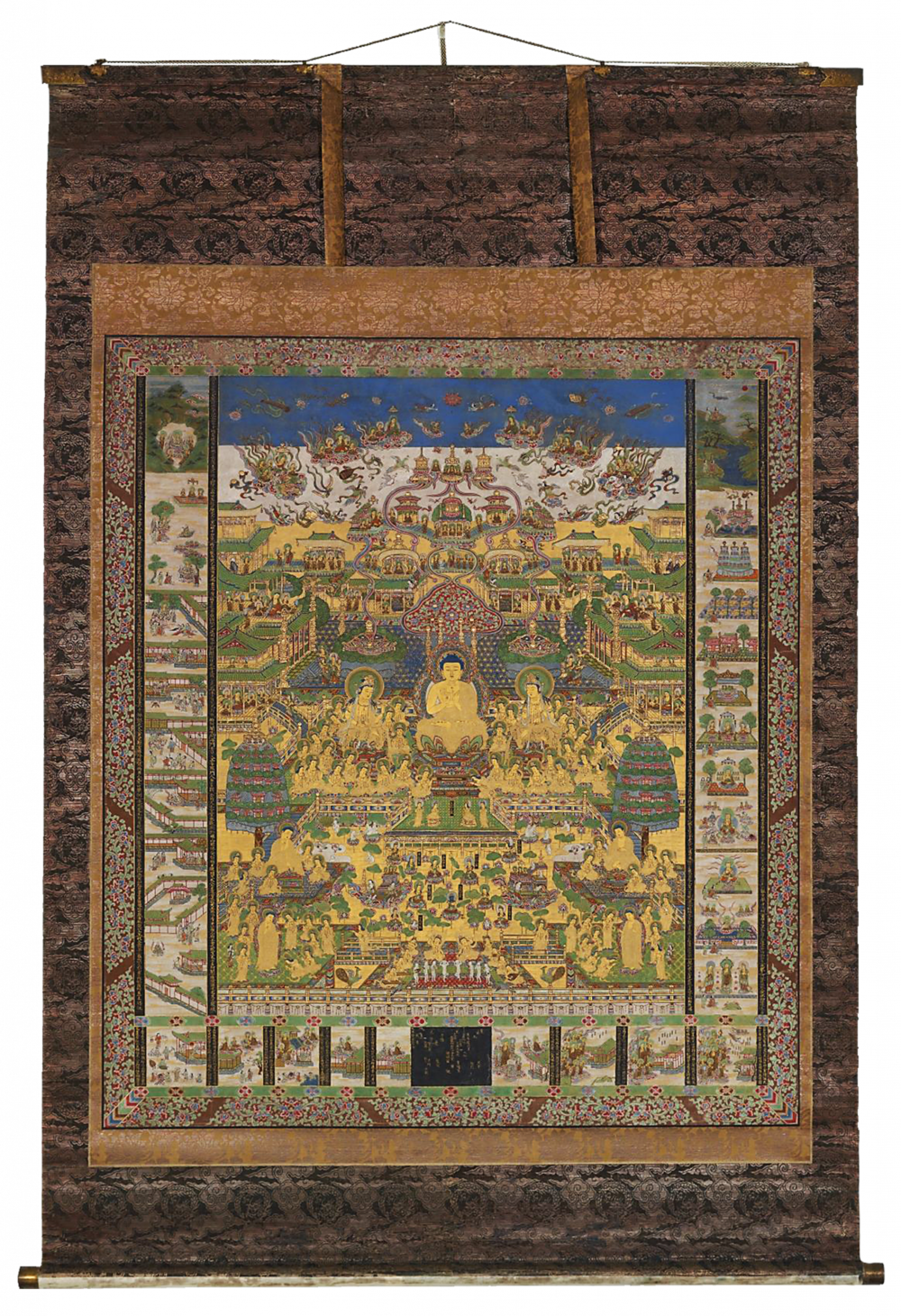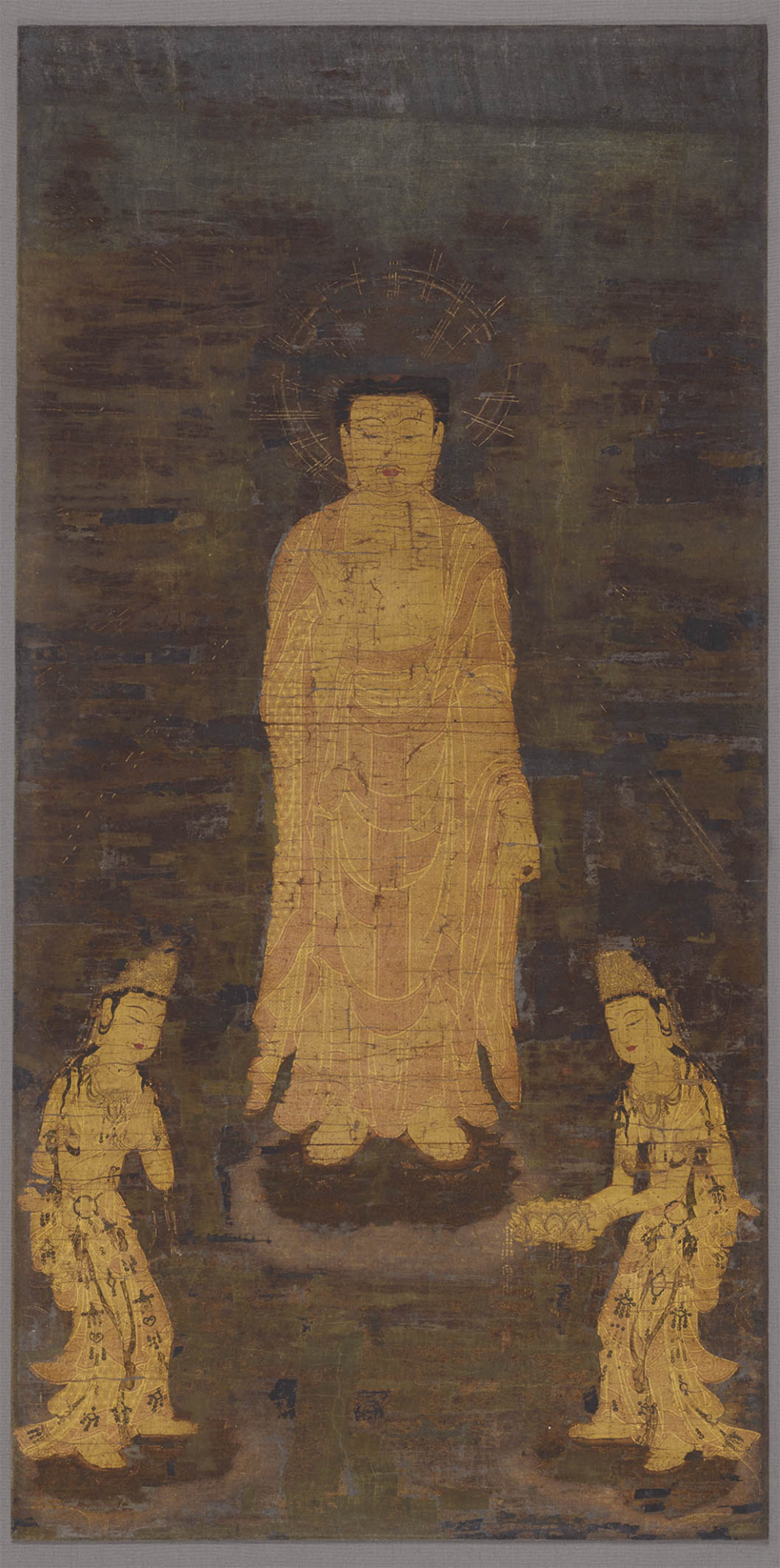Pure Land ideas originated in China and took root in Japan after the 10th century.
From the 12th century, Pure Land in Japan evolved into a tradition in its own right, and today has over 20 million followers. While Pure Land thought and its associated rituals survive in China and Korea, there it does not form a separate school.
Pure Land thought emerged in part from the belief that the era of Buddhism’s spread around the world was drawing to a close. It seemed to Buddhist scholars that an awakening to supreme knowledge through observance of Buddhist teachings was now possible only for the most gifted of monks and nuns. Scholars felt it had become impossible for those leading day-to-day secular lives to achieve Buddhism’s goal.
The teachings associated with the Pure Land of Buddha Amitabha (Amida in Japanese) were consolidated by Buddhist men and women hoping for rebirth there. His Pure Land promised ideal conditions for believers to practise the Buddha’s teachings (the dharma) without interruption from the challenges of everyday life.




